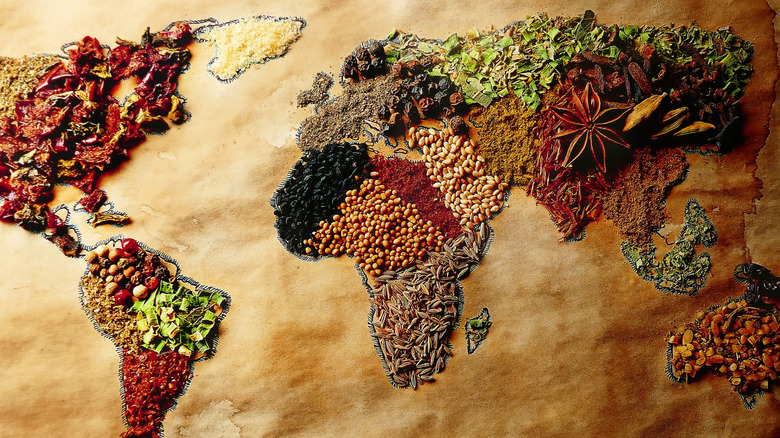Travelers Club Chicago Hardside Expandable Spinner Luggage, Silver, 20" Carry-On
$37.00 (as of March 14, 2025 23:18 GMT +00:00 - More info)Tipping in restaurants may seem like a common practice today, but its origins have a darker history. Dating back to medieval Europe, tipping was initially a way for the upper class to reward their servants. However, when the practice was transplanted to the United States in the 19th century, race and class continued to play a role. The Pullman Company, for instance, hired a predominantly Black workforce and promoted tipping as a recompense for their low wages. This allowed the company to save significant amounts on labor costs. While tipping was temporarily banned in some states in the early 20th century, it resurfaced during Prohibition when hotel owners sought to recoup lost revenue. Despite its controversial history, tipping remains an important source of income for many workers in the hospitality industry today, and opinions about its fairness continue to vary.
Get an Official Zagat Restaurant Guide
The Dark Origins of Tipping
Tipping as a reward for servants in medieval Europe
The practice of tipping originated in medieval Europe as a way for the upper class to reward their servants. It was a means for the wealthy to show their gratitude for good service. Tipping became a customary practice, with the expectation that servants would provide excellent service in order to receive a gratuity. However, this practice was initially limited to the upper class, further emphasizing the class dynamics that were present in tipping from its inception.
Class and race dynamics in tipping during the Reconstruction Era
When tipping was transplanted to the United States in the 19th century, class dynamics continued to play a role in the practice. However, race also became a significant factor during the Reconstruction Era. Tipping became prevalent after the Civil War, particularly in the South, as an indirect means of compensating the predominantly Black workforce of The Pullman Company, which hired many formerly enslaved individuals as porters. These workers were paid meager wages, and tipping was promoted to railway travelers as a way to supplement the low income of these workers. This allowed The Pullman Company to save significant amounts of money on labor costs, as they paid their workers below-market wages.
The Pullman Company and Tipping
The Pullman Company’s use of tipping to save on labor costs
The Pullman Company, which operated railroad sleeping and dining cars, heavily relied on tipping to mitigate labor costs. By hiring a predominantly Black workforce, many of whom were formerly enslaved individuals, The Pullman Company paid extremely low wages. Tipping was then promoted to passengers as a form of recompense for these workers. The company exploited the social expectation of tipping to offset their below-market wages, allowing them to save substantial sums of money. In 1916 alone, it was estimated that The Pullman Company pocketed $2.5 million thanks to their low pay rates.
The Ban on Tipping and Its Reversal
Temporary ban on tipping in the early 20th century
In the early 20th century, several states in the United States implemented temporary bans on tipping. These bans were largely motivated by concerns over the influence of tipping on social dynamics and the potential for corruption. Many viewed tipping as undemocratic and felt that it perpetuated a system of privilege and inequality. These bans attempted to level the playing field and create a more equitable society by removing the expectation of tipping.
Overturning of the ban and increased popularity of tipping during Prohibition
However, these bans on tipping were short-lived and were eventually overturned by the 1920s. This period coincided with Prohibition, a time when the sale and consumption of alcohol were prohibited. To offset the revenue lost from legal alcohol sales, many hotel owners turned their bars into additional restaurant venues. Tipping was encouraged by employers as a means to cut costs on waitstaff wages and recover some of the lost revenue. As a result, tipping became more widespread during this era, with both the frequency and amounts given increasing. The practice of tipping gained greater acceptance and became an established national custom.
Evolution of Tipping in Restaurants
Hotels’ shift towards the European meal plan and the promotion of tipping
In the early 1900s, American hotels discouraged tipping, considering it a form of bribery to secure larger meal portions. However, as hotels began adopting the European meal plan, where restaurant service was billed separately from accommodations, their perspective on tipping shifted. Hotel management started viewing tipping more favorably as a way for customers to show their satisfaction with the service they received. The advent of Prohibition further propelled this shift in attitude, as hotel owners sought to recover lost revenue by promoting tipping in their establishments.
Tipping becoming an established national custom in the 19th century
During the 19th century, tipping gradually evolved from a practice limited to the upper class into an established national custom. Despite initial resistance and criticism, more Americans began accepting and embracing tipping as a way to reward good service. While some viewed it as undemocratic, tipping became ingrained in the culture and became an expectation in various service industries, particularly in restaurants.
Exclusion of Restaurant Workers from Minimum Wage Protections
Introduction of the first minimum wage law in 1938
In 1938, the United States introduced the first federal minimum wage law. This legislation aimed to establish a basic standard of wages for workers across the country. However, restaurant workers were initially excluded from the protection of this law. While other industries saw wage improvements, those working in restaurants remained vulnerable to exploitative labor practices.
Inclusion of restaurant workers in minimum wage protections in 1966
It wasn’t until 1966 that restaurant workers were finally included in minimum wage protections. However, their inclusion came with a caveat. Service staff were only guaranteed a tip credit that ensured their combined wages and tips exceeded the minimum state standard. While this was a step towards fairer compensation, it still relied on tipping as a means to supplement wages and left restaurant workers susceptible to fluctuations in tips.
Get an Official Zagat Restaurant Guide
Contemporary Tipping Practices
Evolution of tipping etiquette
Tipping etiquette has evolved over the years. In the 1950s, a 10% tip was considered standard, but by the 1970s, the expectation had risen to 15%. Nowadays, a tip of 20% or more is considered the norm, although additional factors such as a restaurant’s service fee can complicate the etiquette of tipping. There is a constant evolution in societal expectations around tipping, with the percentage guideline gradually increasing.
Current standard of tipping percentages
The typical tip in the United States currently stands at around 18%. However, slight variations have been observed based on factors such as income, education, and location. Residents of certain states, such as California and Missouri, are known to be more generous tippers, whereas those in states like Illinois and Mississippi tend to tip less on average.
Variations in tipping behavior based on factors such as income, education, and location
Alongside the general range of acceptable tipping percentages, individual tipping behaviors can vary significantly. Factors such as income, education, and geographic location influence tipping practices. Those with higher incomes and higher levels of education tend to tip more generously. Additionally, regional differences can also impact tipping habits, with cultural norms and local economic conditions playing a role.
Pressures and Dissatisfaction with Tipping
Feeling of pressure to increase tips
Approximately two-thirds of Americans report feeling pressured to increase their tips. This pressure can stem from societal expectations, peer influence, or even direct requests from service staff. The sense of obligation to tip above and beyond the customary percentage can create a financial burden on customers.
Rise in ‘tipping fatigue’
There has been a rise in what is known as “tipping fatigue” among individuals. Nearly half of Americans express dissatisfaction with being constantly prompted to leave gratuities. The constant reminder to tip can lead to resentment and frustration, especially when combined with increasing costs of living.
Restaurant owners’ discontent with the tipping model
In recent years, several restaurant owners have voiced their discontent with the tipping model. Restaurateurs like Danny Meyer have been at the forefront of the anti-tipping movement, highlighting the flaws of the system that has been in place since the 19th century. The reliance on tips has perpetuated low wages for restaurant workers, creating an unsustainable and inequitable system. While tips are crucial for workers in the hospitality industry, the discontent among both customers and owners points to the need for alternative models that prioritize fair wages and eliminate the disparities inherent in tipping.
Get an Official Zagat Restaurant Guide







